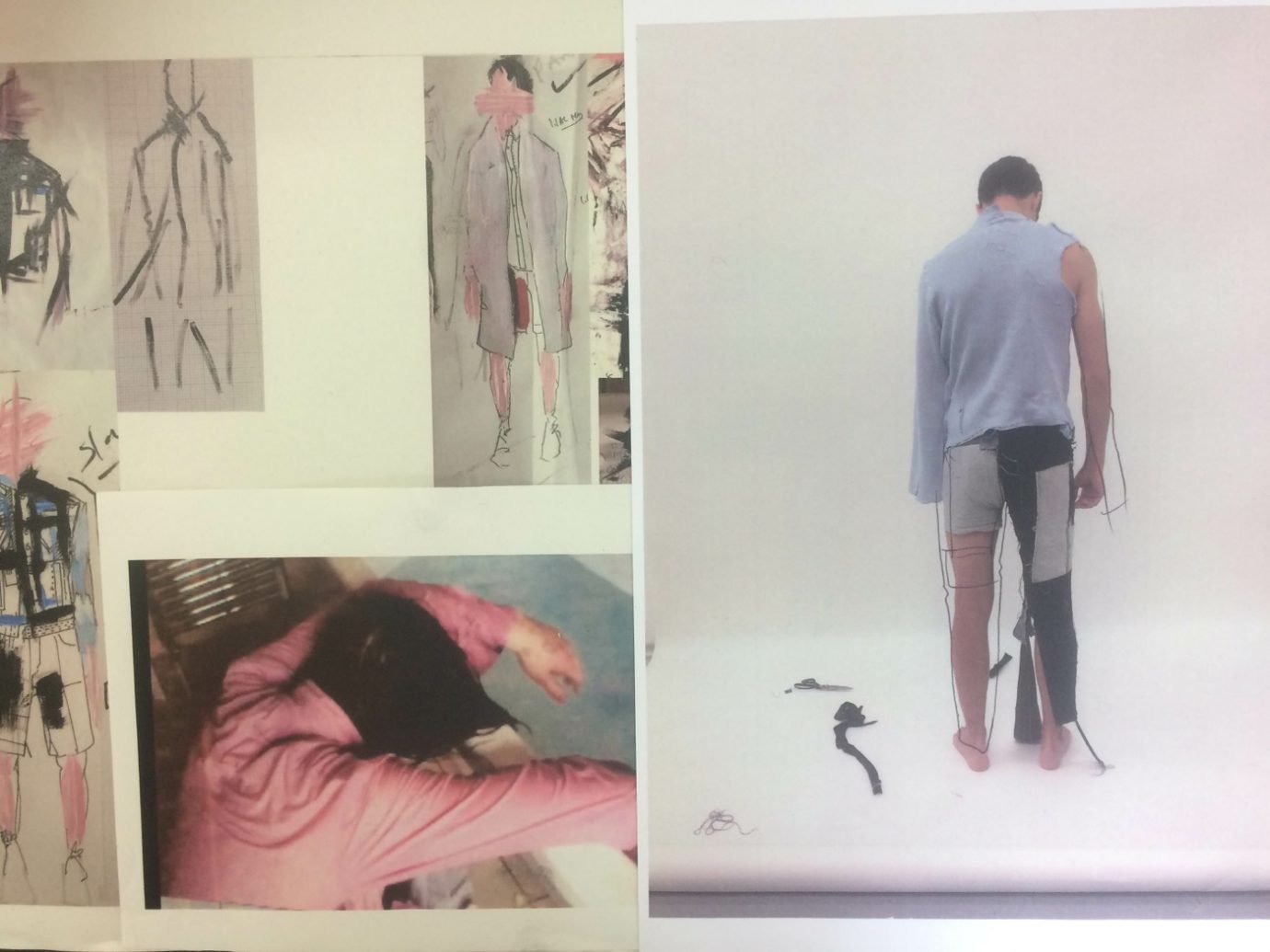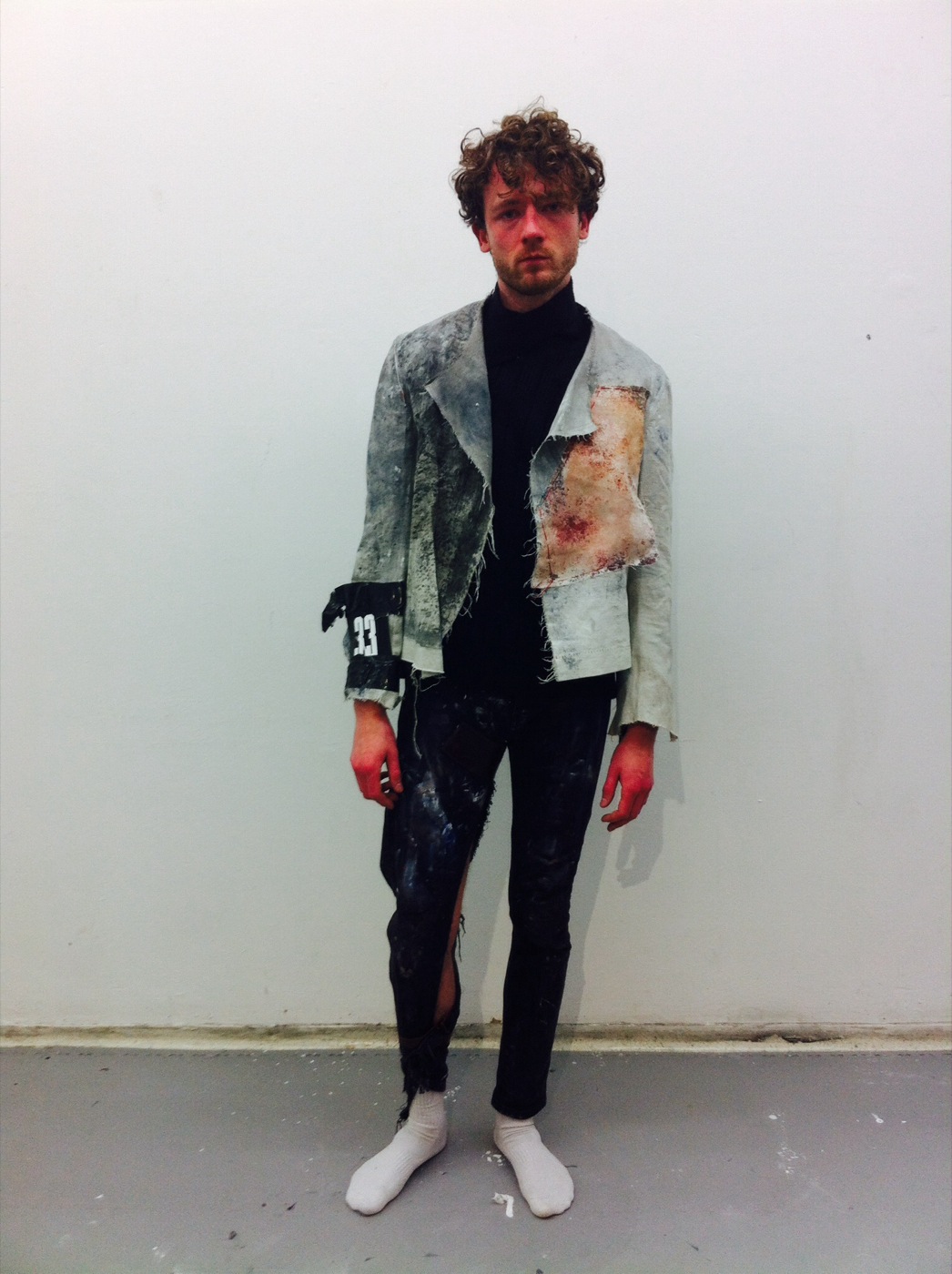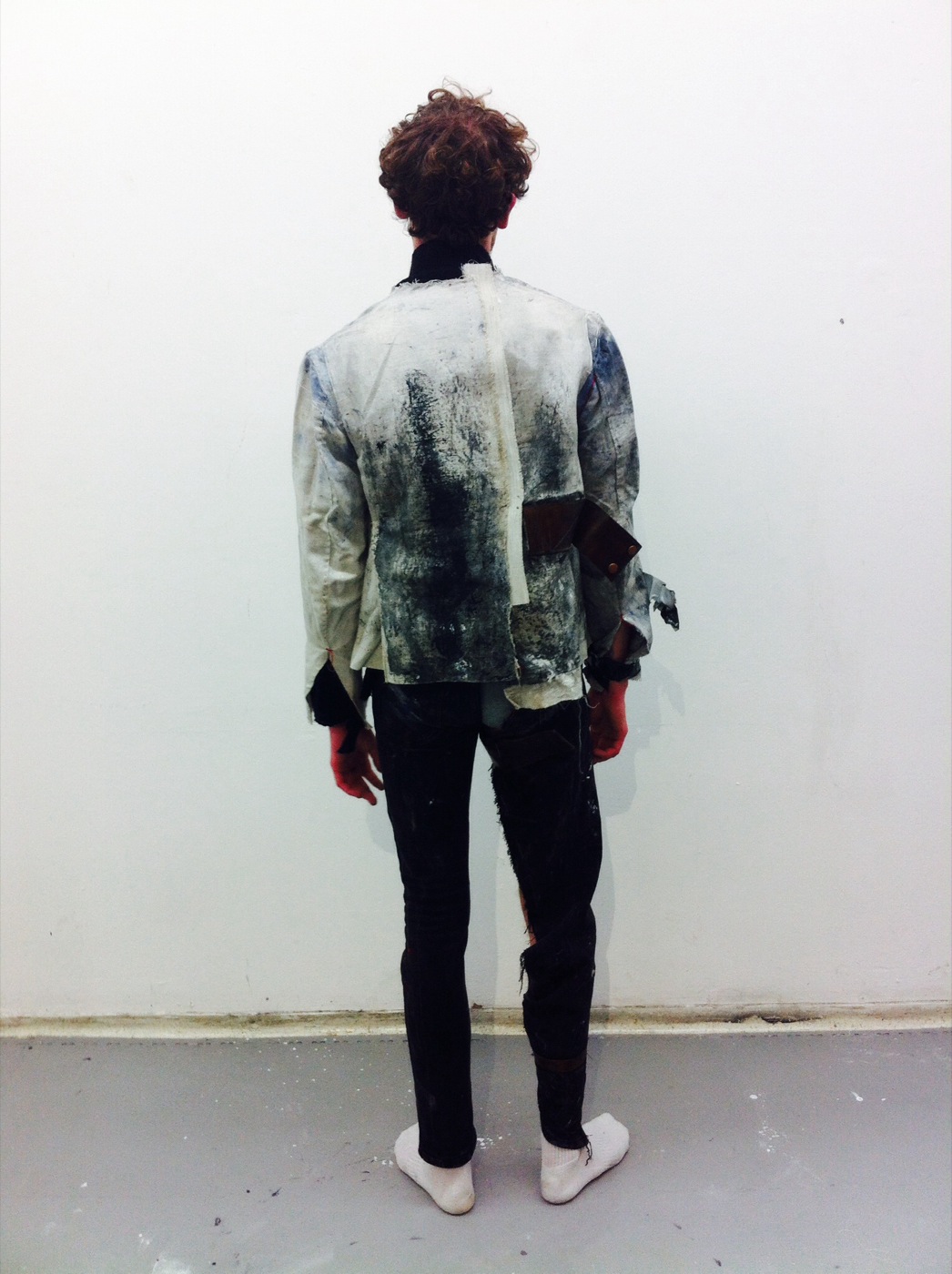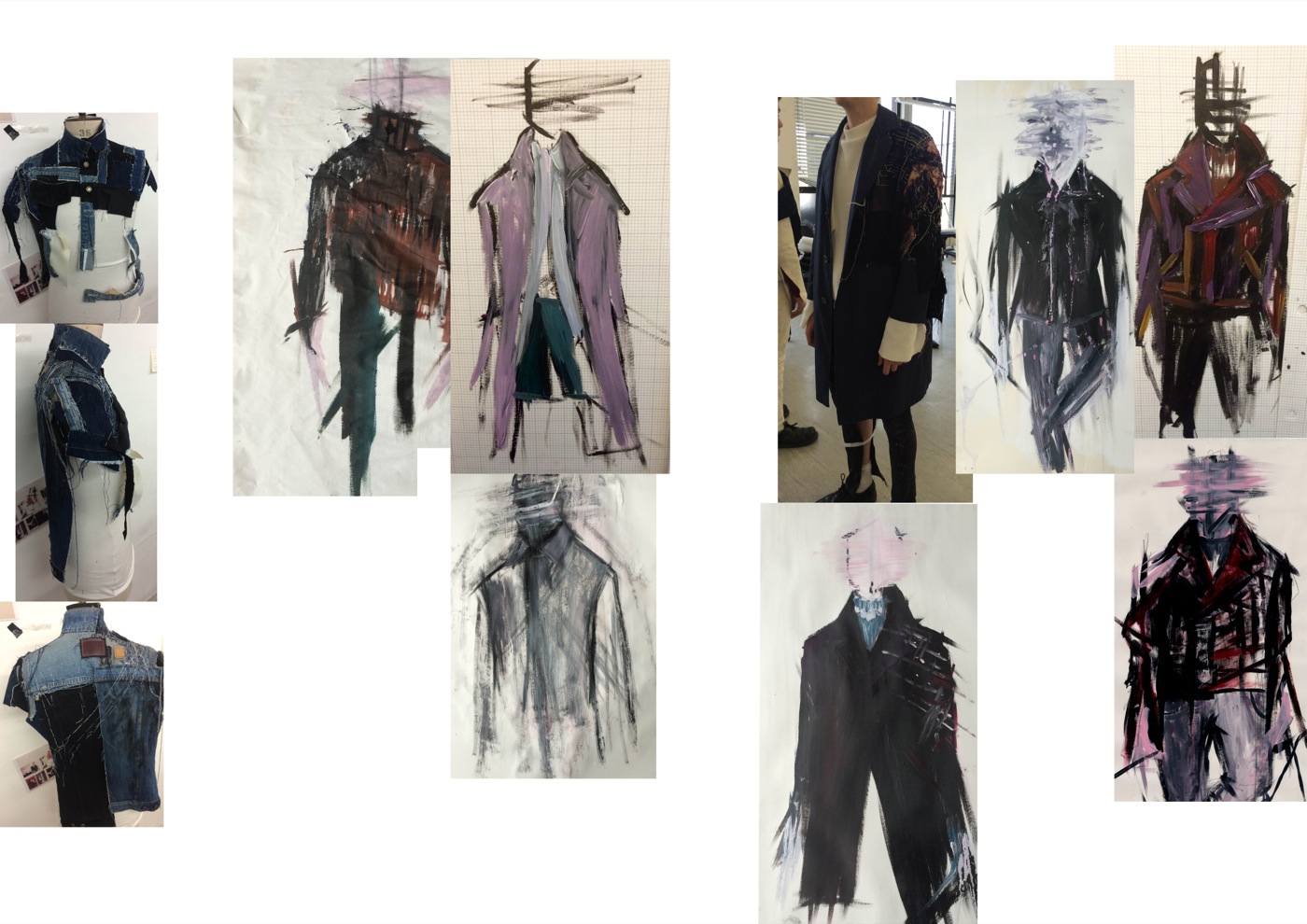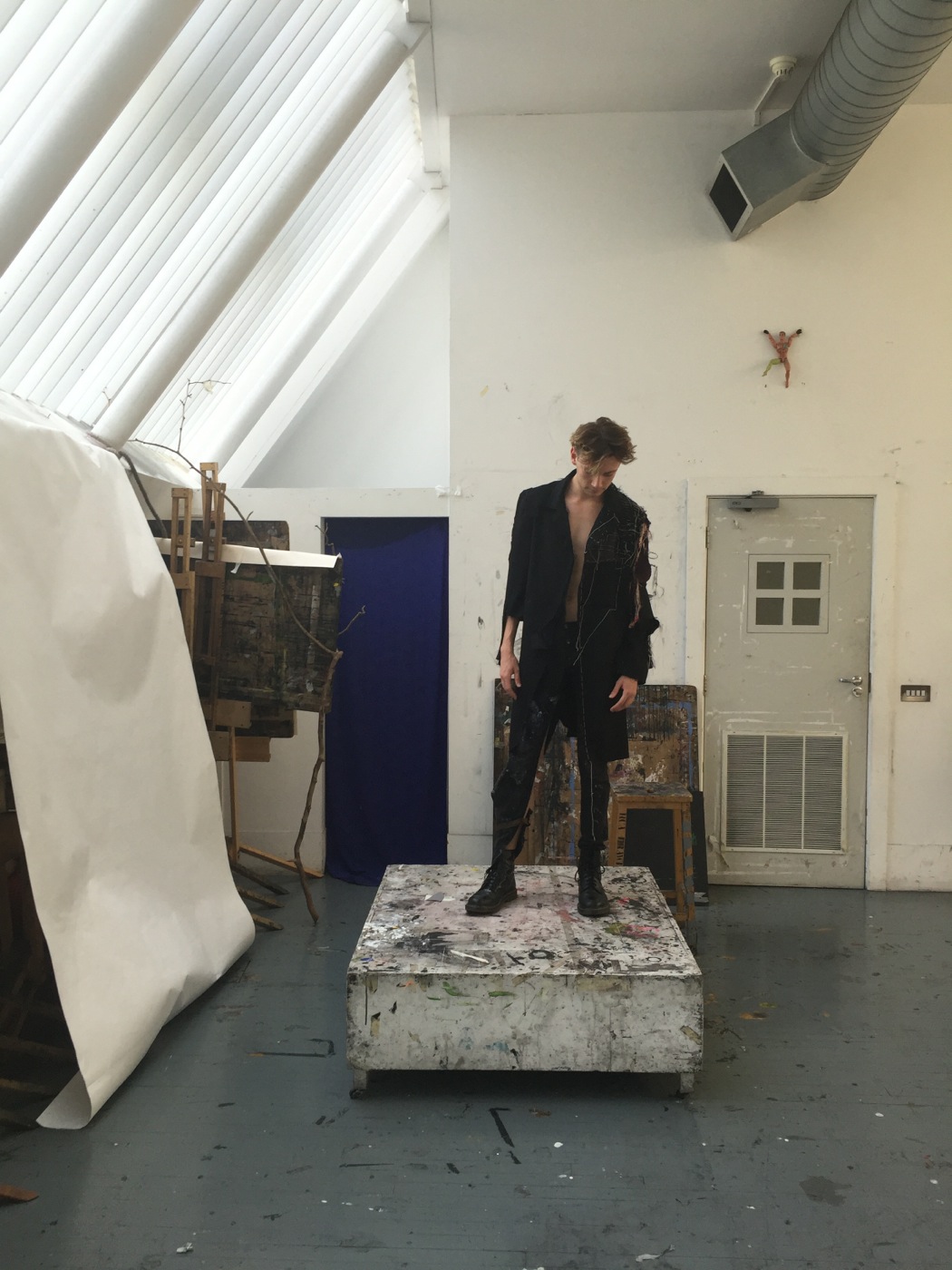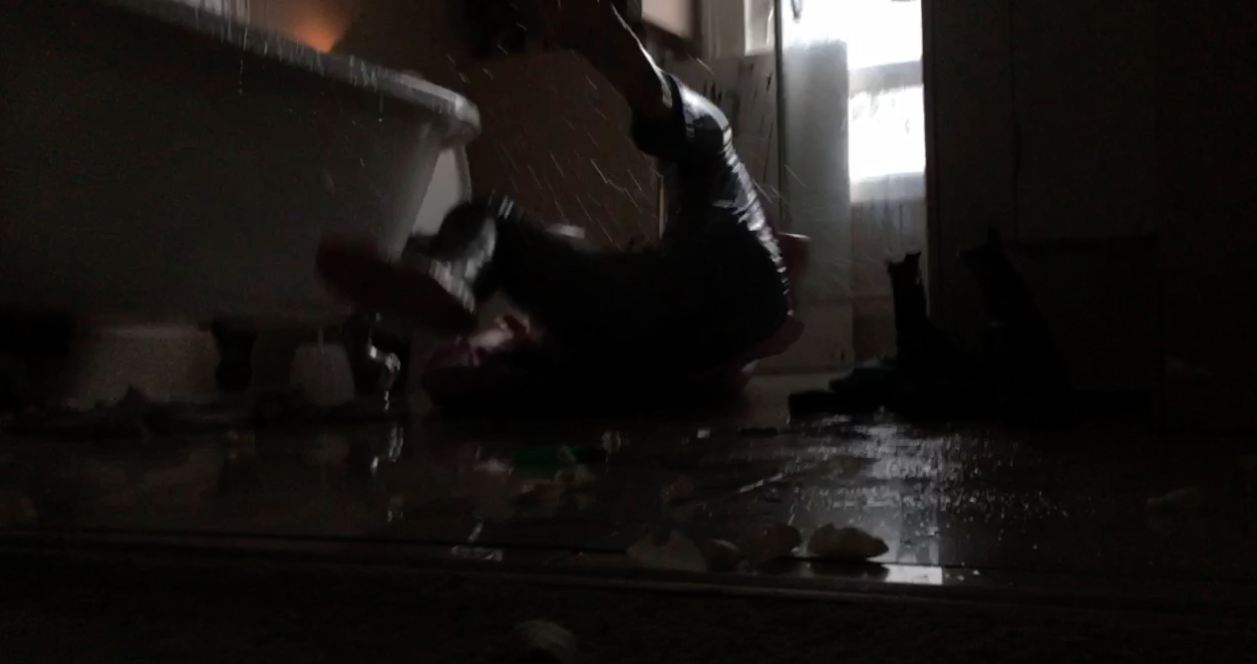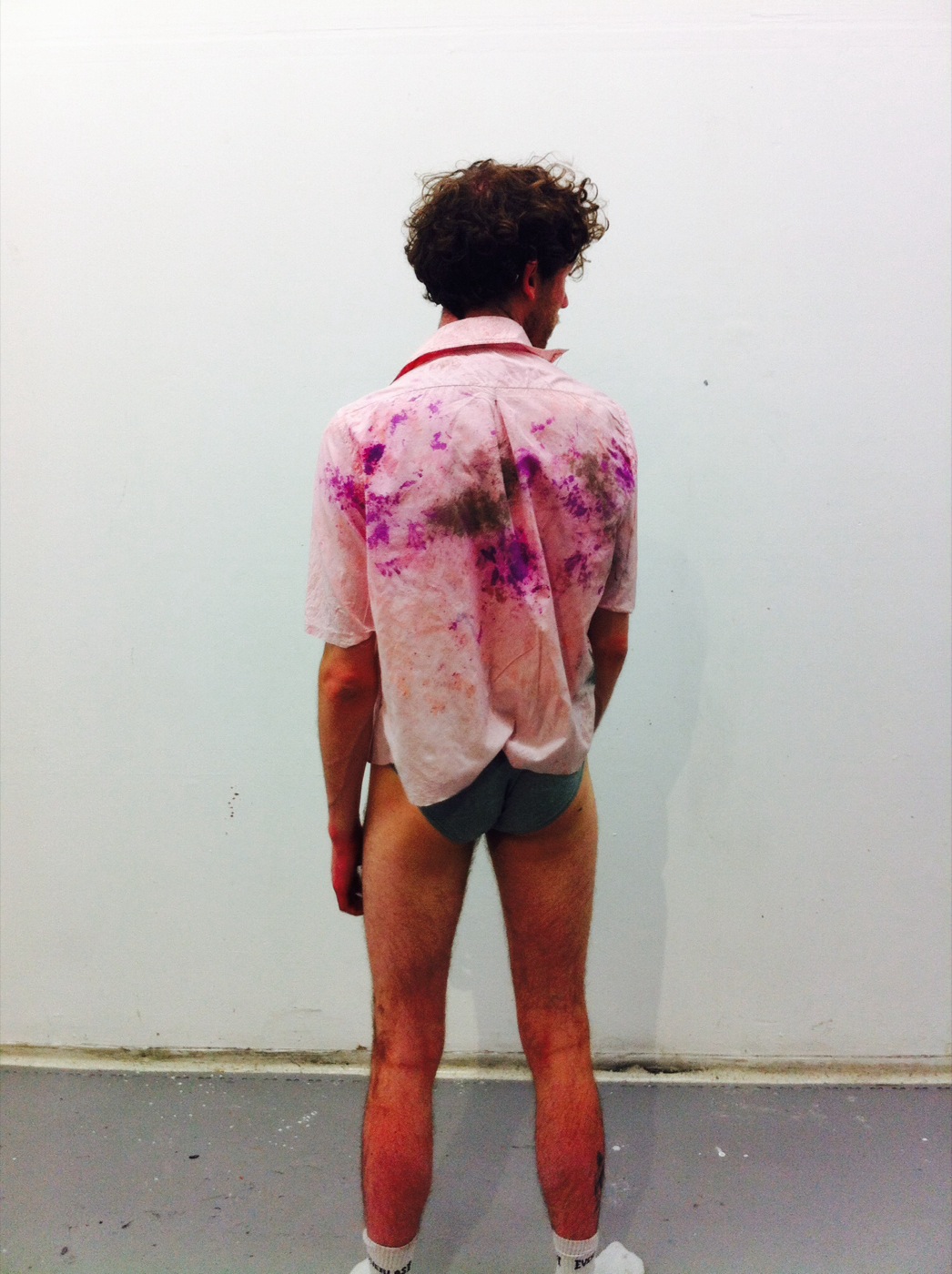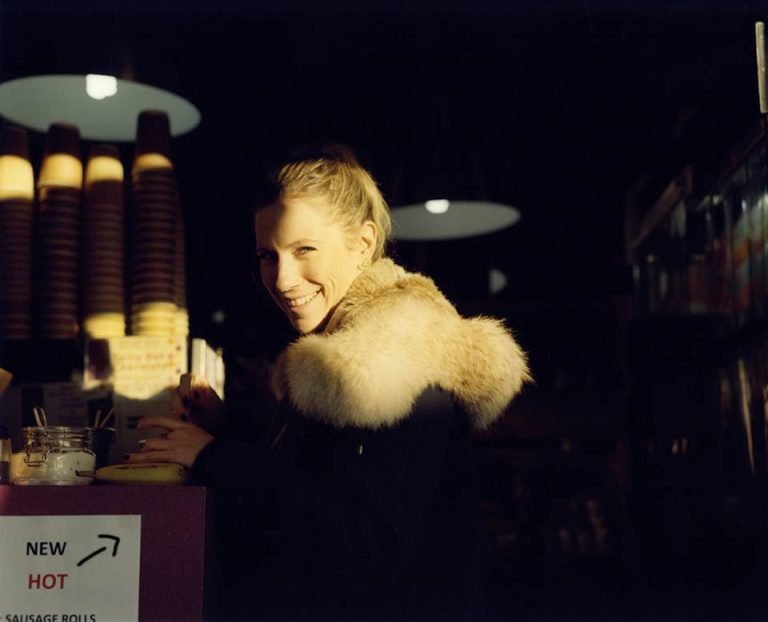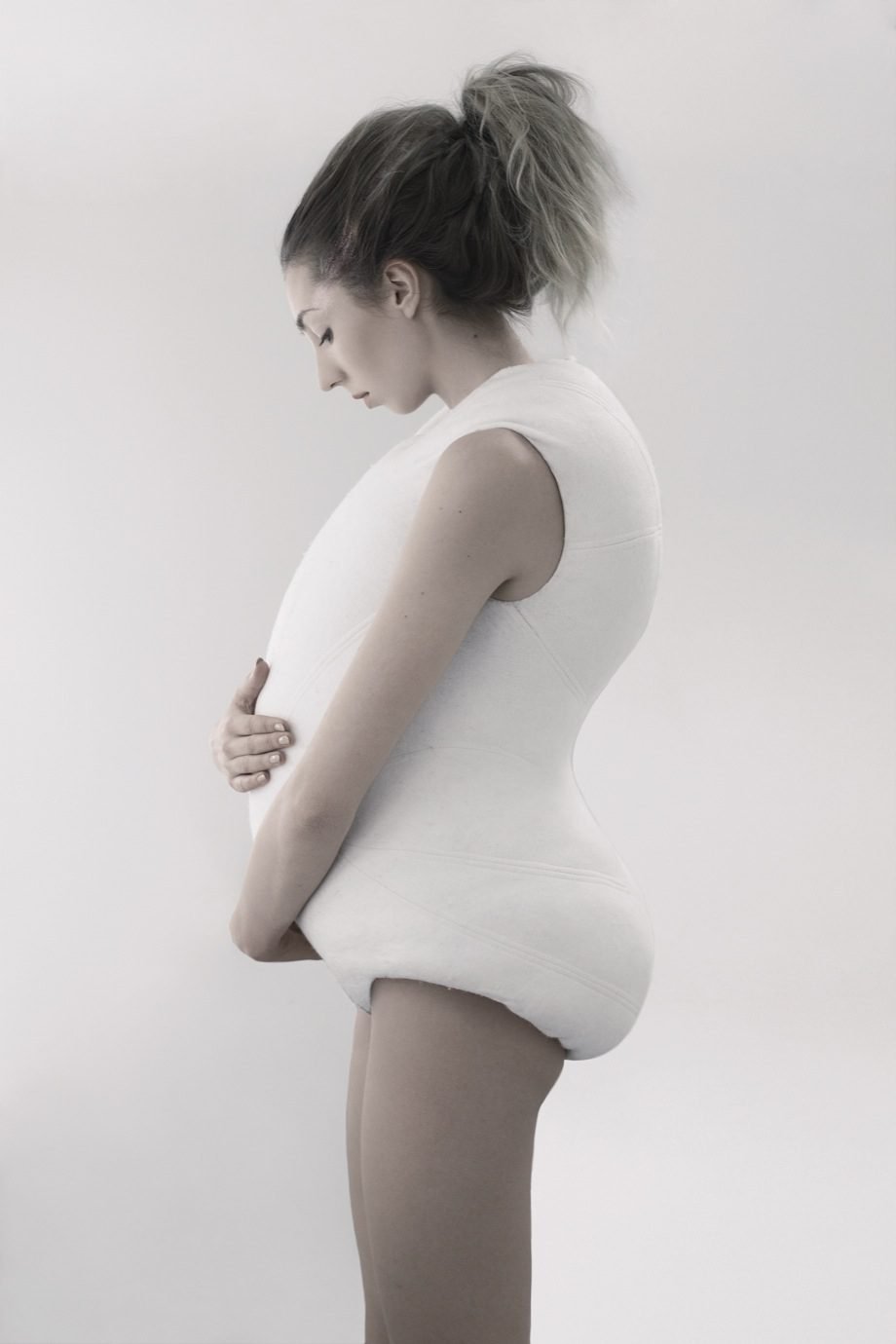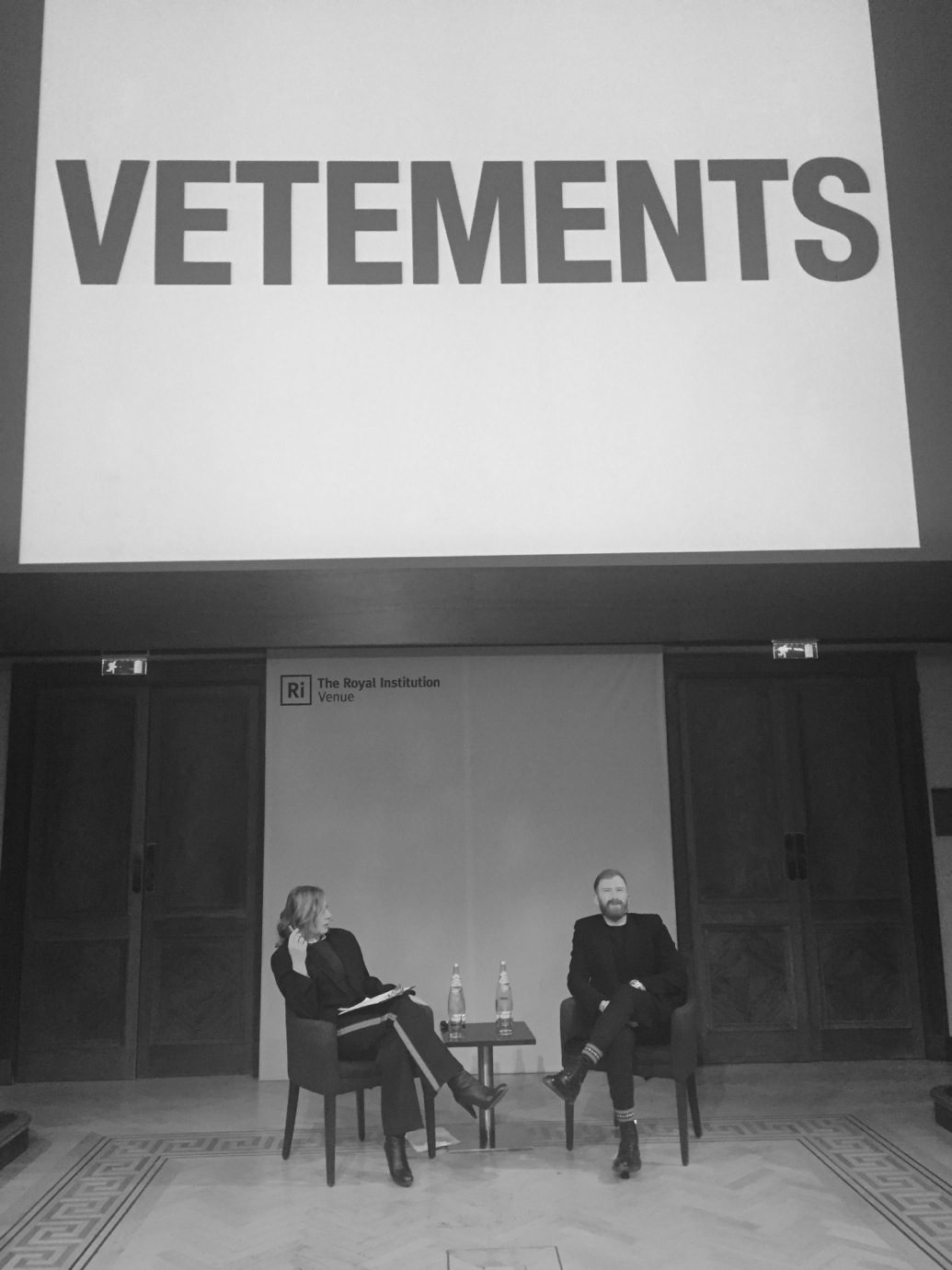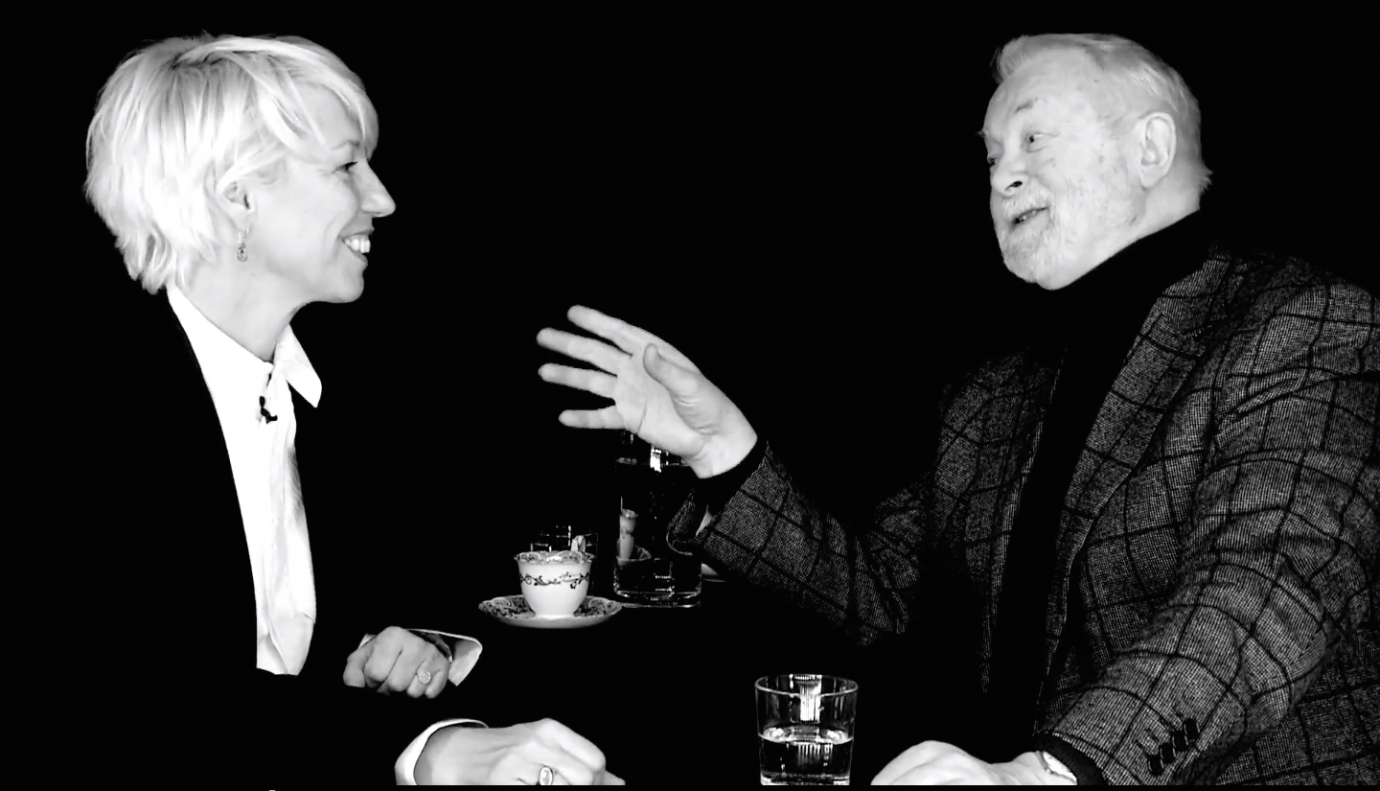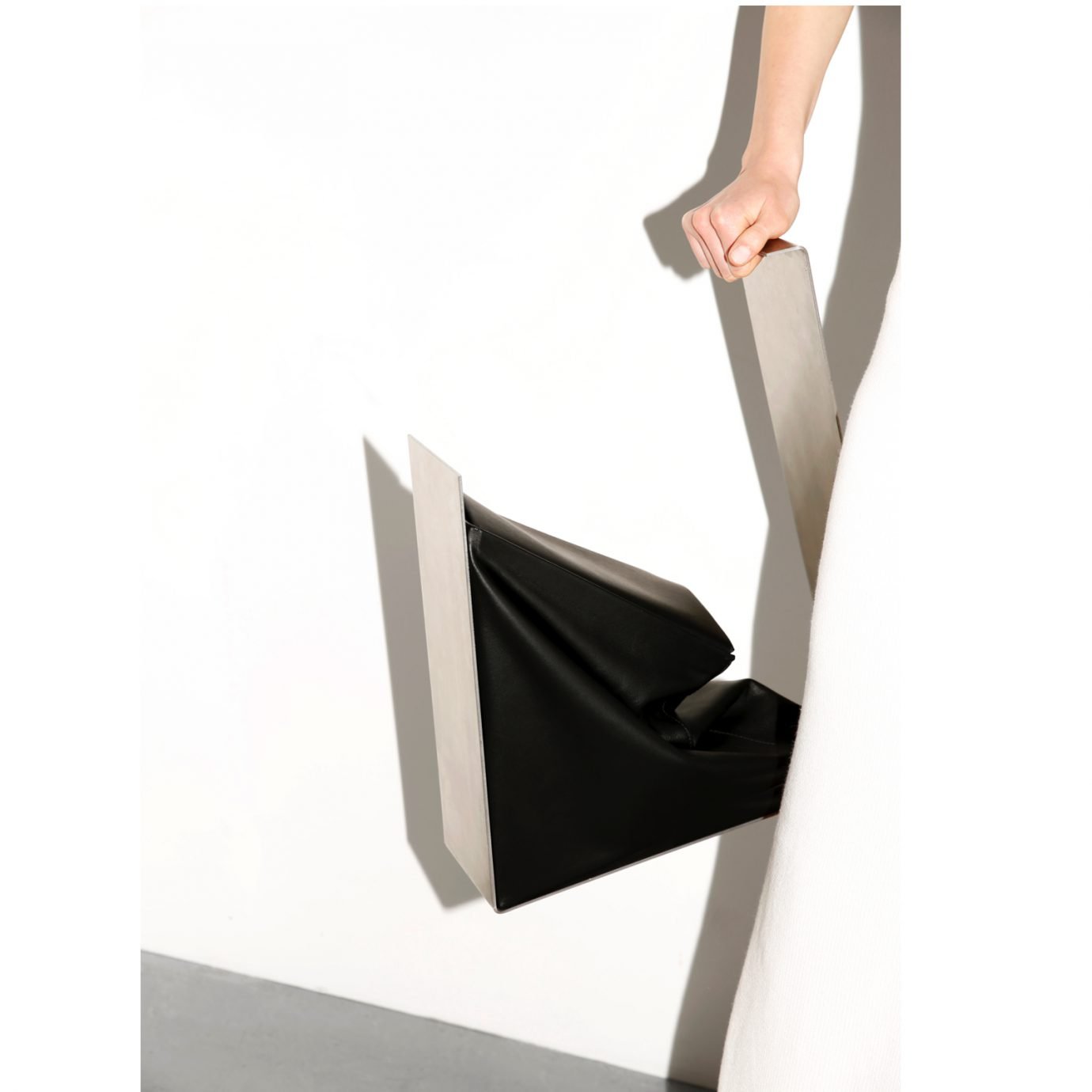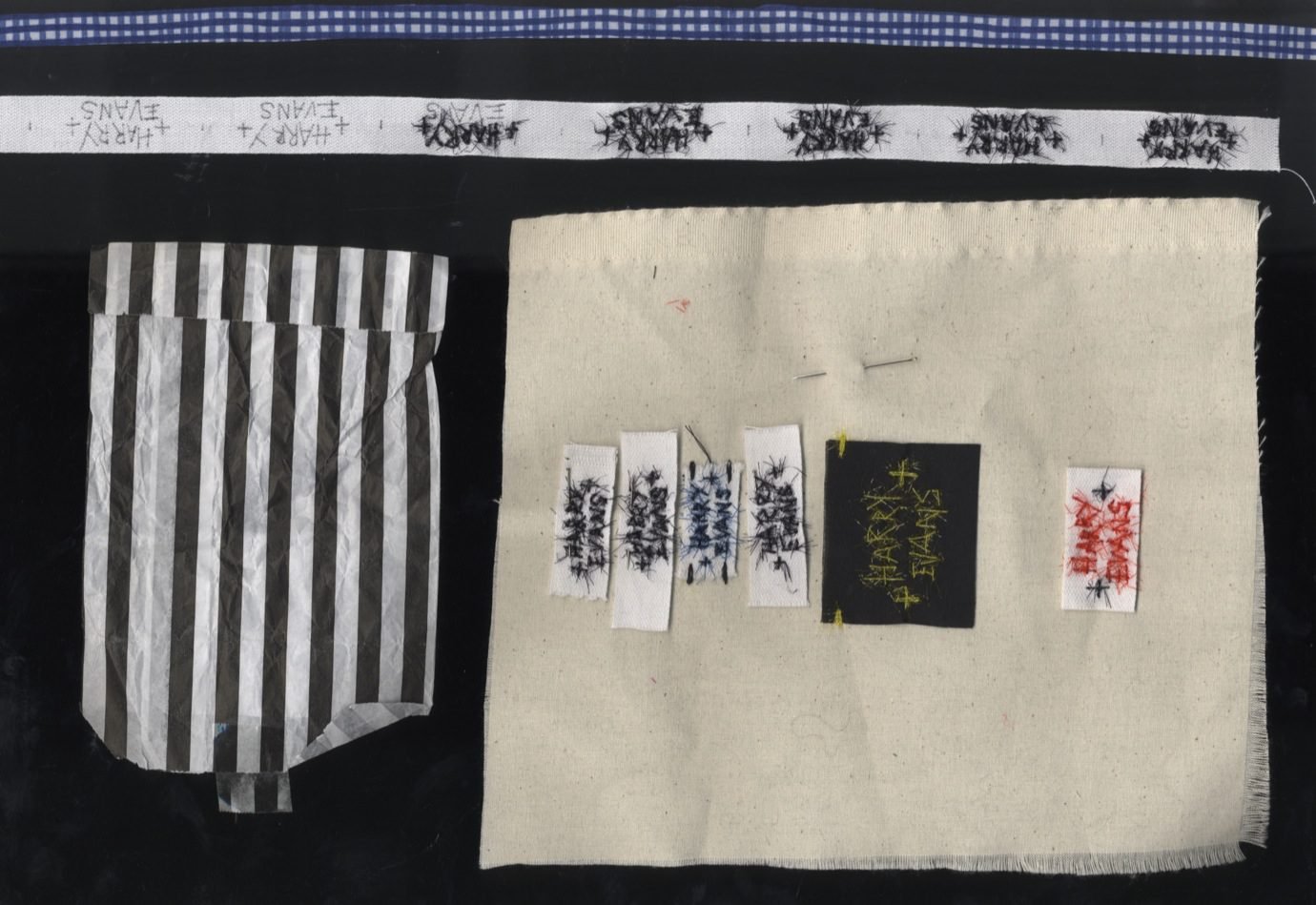“WE LIVE IN A WORLD OF SO MUCH ‘STUFF’, AND ULTIMATELY THE MASS OF GARMENTS BECOMES THE REASON WE FORGET THE SENSE OF IDENTITY THAT COMES WITH DRESSING.”
Do you consider your work as an extension of your own identity?
My work is autobiographical, as the concept is based on my emotional connection to the pieces I make. I’m inspired by how artists and musicians portray narratives and messages through their work. This fascinated me into developing rich emotive narratives within my own work. My main inspiration came from paintings I had created and songs I had written. I wanted to achieve the same fluidity and cathartic energy through my collection.
By removing the process of developing prototypes, I was able to create a more dynamic and visceral quality through my work. The title of this collection is ‘Humans are Fallible Creatures’, so any flaws became features. The process of design became just as important for my work as the final pieces.
The approach to design at the RCA is very liberal and individual. How has this affected the way you interpret a concept?
The RCA offered an environment in which I could really question the ideas of fashion design. I created films and paintings that expressed my own emotions. I wanted to free myself from restrictions by acting instinctively. When I asked myself what I wanted to do, I said: “drink wine and paint.” I filmed this experience and whilst doing this, I started to cover myself in paint and tear at the clothes I was wearing. This film became the basis for my collection. The clothes — with their organic deconstruction — became artifacts and the cathartic feeling became the inspiration. The tutors at the RCA want you to really open up about what it means for you to be a designer. Without their mentoring I would not have been able to achieve this new and exciting way of treating my craft. I develop concepts instinctively now and focus on the authentic meaning behind what I create.
Prior to studying at the RCA did you gain industry experience?
I worked at a variety of brands from high street to high end since I was 18, which has affected my way of thinking about the fashion industry. We live in a world of so much ‘stuff’, and ultimately the mass of garments becomes the reason we forget the sense of identity that comes with dressing. We lose our emotional connection to the clothes we wear. I want to focus on artisanal pieces and spread my artistic language across multi-products, so that I’m not restricted to just one medium, and continue the fluidity felt in my final collection.

